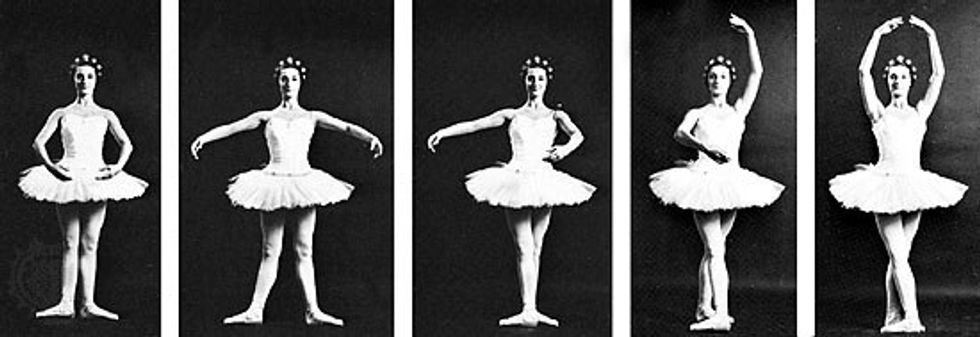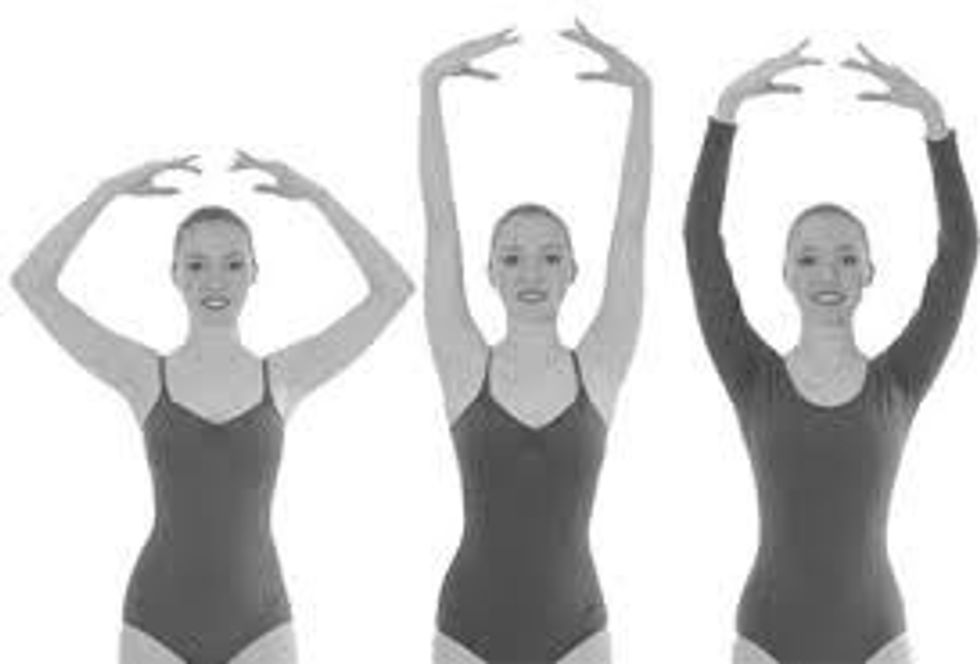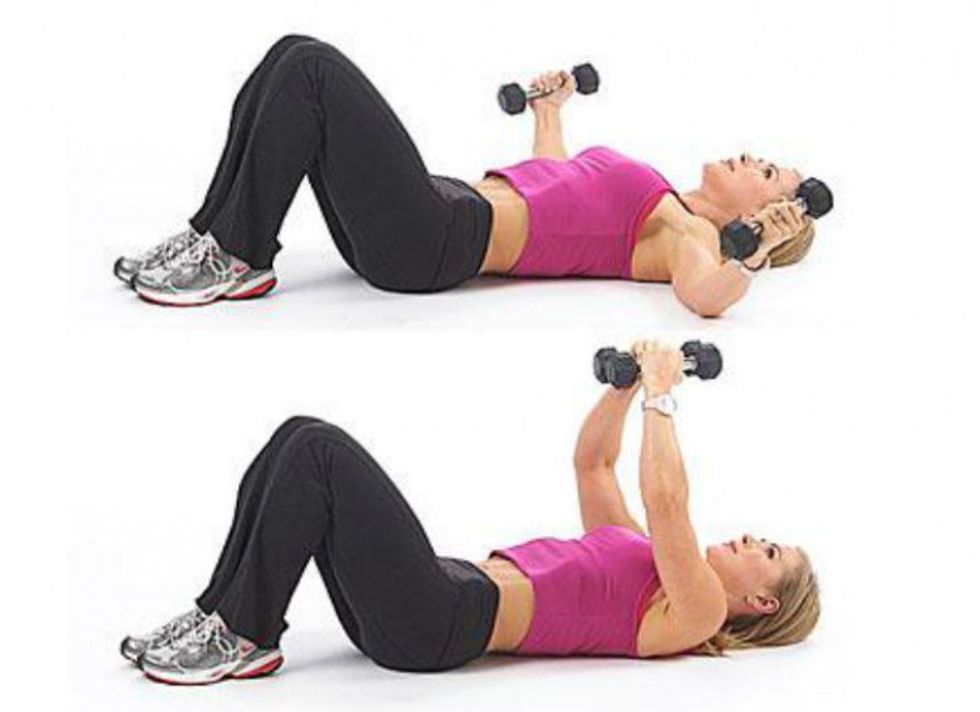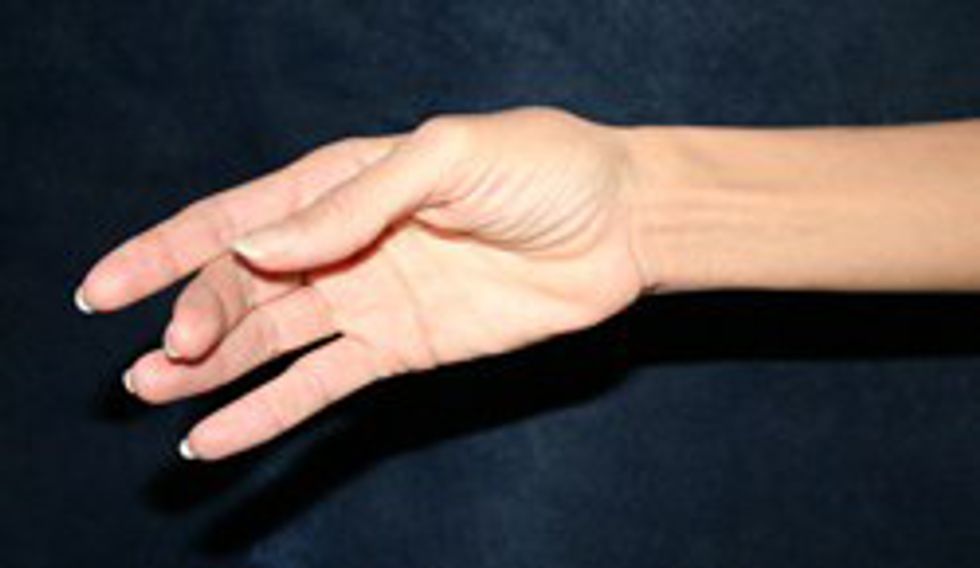An aspect of dance that is very important are port de bras, or movement of the arms. There are five main positions of the arms, however, moving through them is extremely important. Below are the five positions: (They are in order from first to fifth, along with the according feet).
In first position, I tell my young kids to "hug a beach ball." The arms should be placed between the belly button and the sternum, creating a circular shape. Elbows lifted, fingers soft and shoulders down and back.
In second position, I tell my young students to "hug a gigantic teddy bear." Arms are open creating a line from the shoulder to the elbow then the wrist and hand. Elbows should be lifted once again.
In third position, one arm is in first and the other in second. This is generally a pirouette prep position, along with many other things.
In fourth position, one arm is in first and the other above the head. The arms should not cross the center line of the body. The elbow of the arm in fifth should be pulled back.
In fifth position, both arms are above the head. You should be able to see the elbows in peripheral vision and if the eyes are lifted, without moving the head, you should be able to see your hands above your head. Shoulders should be down and fingers should be soft. Arms should not be too crunched or too long. (As shown below—the third girl is correct).
Fingers should be soft, shoulders down and elbows either lifted or back throughout all positions. Although ballerinas don't require a huge amount of flexibility in their arms and shoulders, they do require a lot of strength and correct muscle memory. Having strong arms that look effortless is the key for a ballet dancer.
The important muscle groups to work on are the pectorals, trapezius and various muscles around and supporting the scapula.
To make the pectorals stronger, start laying on your back, knees can be bent to allow the lower back to be straight on the floor. Start with arms in first position and open to second, slowly and controlled. Do this about 15 times. If you do not feel it or would like to add intensity, add weight of your choice. The back should stay flat on the floor, be careful to avoid arching and the abdominals should be engaged. Push ups are also a great way to gain strength in the pectorals.
To strengthen your trapezius, shoulder shrugs are great. Lifting your shoulders as high as you can and then pressing them down and back can increase the strength. You can also add weight by simply holding dumbbells.
If your arm gets tired in second, chances are the muscles surrounding your scapula are weak. Putting your arms straight to the side and doing pulses can help. Pulse up and down, forward and back as well as circles going forward and backward. You should be engaging the muscles of your back around the lower part of your scapula—or better known as your "chicken wing."
To finish the port de bra, is the hand. Your hand is extremely important in finishing your arms. Fingers should be soft and separated. Usually, I teach students to touch their middle finger to their thumb then separate them slightly and tuck the thumb.
Hope this helps with your port de bras. If you have any questions, please comment below!






















